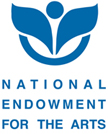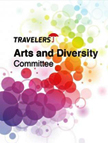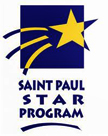Crafts and Ornaments |
|---|
CO1: These are newer Hmong American craft items that do not incorporate Hmong embroidery. They are sold at craft shows, festivals, multicultural events, and Hmong shops. These are sand-stuffed turtles, cut from patterns and hand sewn, using synthetic, spandex or active wear fabrics. The targeted audiences are non-Hmong people, especially children and young adults, but Hmong children like them as well because of their soft feel. The middle turtle was purchased at the Dragon Festival in Saint Paul, Minnesota, in 2008, and the two smaller ones at the Lemon Festival in Saint Cloud, Minnesota, in 2002. Hmong women started making these crafts in the mid-1990s, inspired and influenced by the popular Beanie Baby fad. Instead of using small plastic beads, sand is utilized. These crafts now come in a wide variety of sizes, colors, and animals, including mythical creatures such as dragons, unicorns, fairies, and mermaids.
|
Back to Top |
CO2: This is a hand sewn frog made of synthetic and active wear fabric. It was purchased at a Hmong crafts booth at the Festival of Nations in 2012 in Saint Paul, Minnesota. Children love the feel of the sand animals due to their soft touch.
|
Back to Top |
CO3: This animal craft depicts a colorful, sand-stuffed frog. It is made by Hmong American women who sell paj ntaub and related textiles and crafts at local crafts shows, festivals, and Hmong shops. The material used for this frog was a synthetic fabric. Stuffed sand animals were cut from patterns and hand-sewn individually. By Sy Vang, 2004, 23x20x4 cm |
Back to Top |
CO4: This stuffed horse is a Hmong American craft, which has now been produced in the United States for over a decade. The heart motif involves cross-stitch embroidery on monk’s cloth. The fabric used for the donkey is a shiny synthetic.
|
Back to Top |
CO5:The animal depicted in this artwork is a turtle made of cotton fabric with the exception of its shell. The shell involves an embroidered inverted elephant’s foot motif done on red monk’s cloth. Note that this piece does not possess the standard elephant’s foot because the snails are facing outward. In the center of the motif the double triangles function as decoration, along with the mountains, seeds, and fences in the channels of the turtle shell.
By an unknown artist, 2000, 22x14x10 cm |
Back to Top |
CO6: The animal shown in the photo is a reindeer. It was made with a floral pattern cotton fabric, and stuffed with cotton. The eyes of the reindeer were hand sewn with chain stitches. This piece was made in the United States. The reindeer is a Christmas icon; therefore, it was made to be sold as an ornament for Christmas to non-Hmong customers.
By Lou V. Xiong, 1980s, 24x18x6 cm Photo by Xai S. Lor, item at the Hmong Archives |
Back to Top |
CO7: The technique used for this bird is rather rare. It is not common to see such methods utilized in Hmong crafts, especially stuffed animals. The piece was first constructed in reverse appliqué, and then cut into the shape of the bird, put together and hand-sewn. The spiral of the snail motif acts as the eye of a duck or dove.
By an unknown artist, 2008, 20x7x6 cm |
Back to Top |
CO8: This stuffed animal is a Hmong American craft. It is a rhinoceros. Spandex fabric was cut into the shape of the animal, and hand-sewn. The animal was then individually stuffed with sand by hand. The completed product consists of a soft sand-stuffed animal. Crafts such as this one are often sold at art fairs and festivals, and are popular with children.
By Pa Yang, 2005, 14x8x4 cm |
Back to Top |
CO9: This gecko serves as a decoration for a hair clip. It is not a traditional craft or motif
By Houa Vang, 2005, 12x8x3 cm |
Back to Top |
CO10: These are key chains made by Hmong residing in Thailand. The dolls picture a boy and a girl, both individually hand sewn. They are made of cotton fabric, yarn, and pompoms. The material used for the hats includes monk’s cloth as well as cross-stitch fabric, and they are decorated in running and cross-stitches.
|
Back to Top |
Page 1 >> Page 2 |



